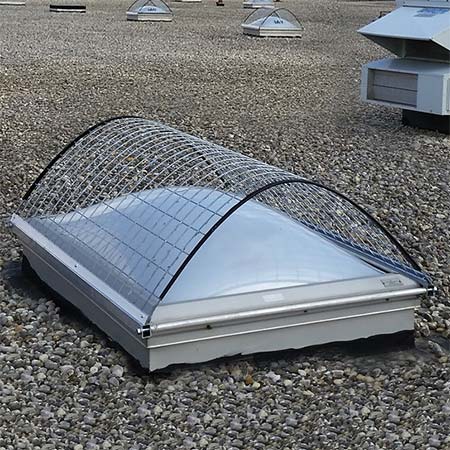According to the Occupational Safety and Health Administration (OSHA), approximately 800 construction workers die on the job each year, with falls being the number one cause of fatalities. One of every three construction worker deaths is caused by a fall, which often occurs in a split second while workers are on roofs, scaffolds, ladders, bridges, and other work surfaces. The good news is that these deaths can be prevented, and using the right type of fall protection saves lives.
This article will discuss a case where a worker fell through an unguarded skylight while reroofing a two-story townhome. We will analyze what led to this tragic incident, identify the necessary precautions that could have prevented it, and emphasize the importance of following OSHA’s fall protection standards for skylights.
An unfortunate example of a preventable fall occurred while two workers were reroofing a two-story townhome. Though they were not wearing any personal fall protection, there were guardrails installed on the roof. One worker was nailing shingles near an unguarded skylight when he stepped backwards onto the skylight, which broke under his weight. He fell 15 feet and was badly injured, dying two days later at the hospital. This tragic incident highlights the importance of following OSHA’s fall protection standards to prevent construction deaths. A skylight cover meeting OSHA requirements could have prevented this accident. In this case, the worker would have bumped into the cover, regained his footing, and continued installing shingles safely.
So, what could have been done differently to prevent this tragedy? The employer had provided guardrails but failed to address the fall hazard posed by the unguarded skylight. A cover meeting OSHA requirements should have been installed over the skylight. In such a case, the worker would have bumped into the cover instead of falling through the skylight, potentially saving his life. In the construction industry, workers often encounter skylights, which present a significant fall hazard. It is crucial to take the time to cover holes on roofs, whether during new construction or residential re-roofing, to prevent injuries or deaths. Temporary guardrail systems or permanent fall protection systems can provide additional safety measures for workers around skylights.
OSHA has several regulations in place to protect workers from falling through holes, including skylights, on walking/working surfaces. These regulations mandate the use of personal fall arrest systems, covers, or guardrail systems around holes more than six feet above lower levels. They also require employees to be protected from tripping in, stepping into, or through holes by using covers, and protect them from objects falling through holes with covers as well:
- 1926.501(b)(4) Holes.
- 1926.501(b)(4)(i) Each employee on walking/working surfaces shall be protected from falling through holes (including skylights) more than 6 feet (1.8 m) above lower levels, by personal fall arrest systems, covers, or guardrail systems erected around such holes.
- 1926.501(b)(4)(ii) Each employee on a walking/working surface shall be protected from tripping in or stepping into or through holes (including skylights) by covers.
- 1926.501(b)(4)(iii) Each employee on a walking/working surface shall be protected from objects falling through holes (including skylights) by covers.
In 2017 OSHA updated its requirements for skylight screens:
- 1910.29(e) Covers. The employer must ensure each cover for a hole in a walking-working surface:
- 1910.29(e)(1) Is capable of supporting without failure, at least twice the maximum intended load that may be imposed on the cover at any one time; and
- 1910.29(e)(2) Is secured to prevent accidental displacement.
Previously, screens had to be capable of withstanding a 200-pound load without deflecting downward enough to break the glass below. The new code states that screens must be capable of supporting without failure at least twice the maximum intended load that may be imposed on the cover at any one time. This change in verbiage emphasizes the importance of not only preventing a worker from falling but also eliminating the risk of injury from broken glass. However, the new criteria have created confusion due to the lack of specific guidelines. Previously, the requirements were more explicit, but they were deemed insufficient and problematic. Now, the criteria refer to the general requirements of all “covers” for roof and floor openings, including skylight openings, which leaves compliance open to interpretation.
In light of the OSHA requirements for skylight screens, updated in 2017, it is essential for employers to evaluate their current skylight protection measures to ensure compliance. OSHA now requires that skylight screens be capable of supporting, without failure, at least twice the maximum intended load that may be imposed on the cover at any one time. This change underscores the importance of preventing falls through skylights.
References:










